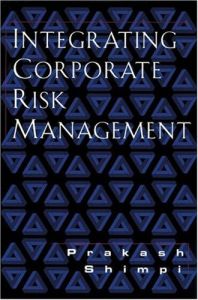Join getAbstract to access the summary!

Join getAbstract to access the summary!
Prakash Shimpi
Integrating Corporate Risk Management
Thomson Texere, 1999
What's inside?
Risk: the lifeblood of opportunity and the specter of ruin.
Recommendation
Many corporate officers deal with risk, from treasurers and risk managers to CFOs. But since each department faces risks of a different type, risk management in many cases is an ad hoc affair. Prakash Shimpi’s vision of integrated risk management not only consolidates the risk-management practices of an entire firm, but also blends capital management and risk management into a single, cohesive framework. This framework is the centerpiece of Shimpi’s book, which also provides readers with a comprehensive look at current risk-management practices, old and new tools for managing risk, and likely future developments in the field. While the topic at hand is complex and built of often-unfamiliar jargon, Shimpi manages to present the material in an accessible and engaging manner that will satisfy financial experts but won’t intimidate novices. getabstract recommends this book not only to the obvious audience of risk managers, treasurers and c-level executives, but also to mid-level managers and students, who will need an increasingly sophisticated understanding of the topic as risk management becomes an ever-larger component of basic corporate strategy.
Summary
About the Author
Prakash A. Shimpi is Managing Principal (U.S.) for Swiss Re New Markets. Swiss Re is a leading reinsurance firm with a global reputation for innovative financial techniques and management. Prior to joining Swiss Re in 1995, Shimpi was managing director of the Global Insurance Corporate Finance Division of Chase Manhattan Bank.


















Comment on this summary